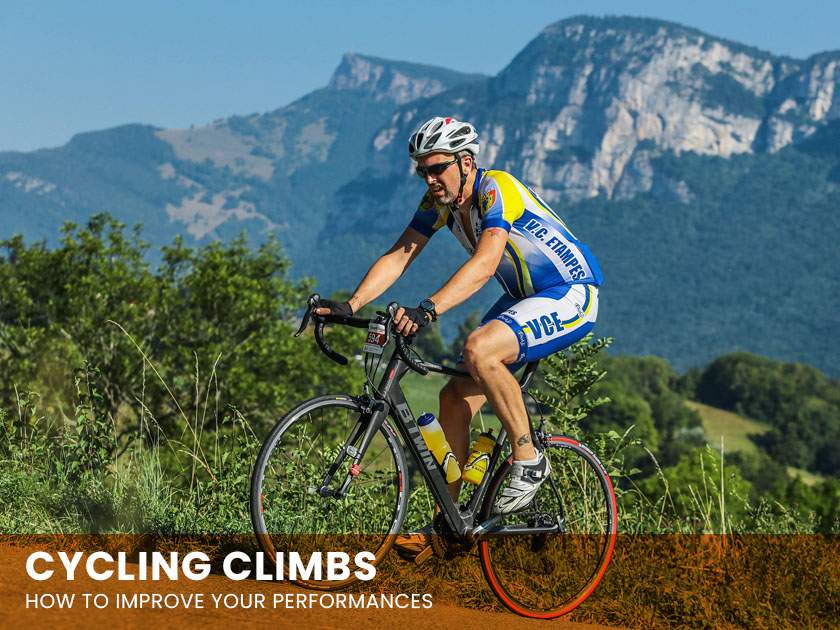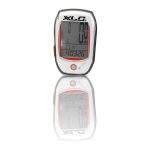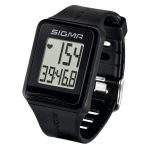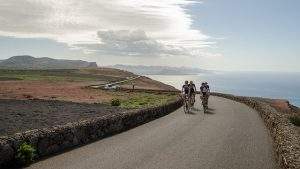FREE SHIPPING STARTING FROM 89€
Fast delivery with express courier
30 DAYS MONEY BACK GUARANTEE
Specific training to improve your climbs

As one of the most popular challenges for cyclists, the climb deserves a place of honour. Mountain and sloping routes are a test ground that allows us to question and overcome our limits.
But what is the best specific training for improving on the climbs? Someone will probably think immediately about repeats, but let's be honest...
Facing a climb is not just a matter of legs and athletic preparation. The mind also plays a fundamental role!
Understanding how to dose your energy and what rhythm to follow will be very important. Here are some tips for training your body and mind in view of the climbs.
Cycle training on the climbs: it starts with the right posture
Sometimes the wrong position on a bike consumes more energy than it should, prevents you from breathing optimally and forces you to over-stretch some muscles.
When riding uphill, it's best to pedal while seated, with the handle at the top of the handlebars. This posture allows you to stay straight and breathe better. The low handle is not necessary in these cases, because the speed will not be high and you do not need to hold an aerodynamic position.
When you feel the need to change position or you want to change pace, you can make the ascent standing on the pedals. However, consider that often the climb is long, so you should prefer a constant pace that you can maintain even over long distances.
Of course, the legendary Pantani loved to face the climbs standing on the pedals and with the grip low, but he was a champion of unparalleled level and few are capable of such a waste of energy, without collapsing mentally and physically.
Keeping the right pace on the climb is a matter of head
 Before we even think about training our legs, let's start with the head and energy management. If you give it your all at the start of the climb, you're unlikely to get to the top. The secret to improving on the climb is to maintain a constant pace.
Before we even think about training our legs, let's start with the head and energy management. If you give it your all at the start of the climb, you're unlikely to get to the top. The secret to improving on the climb is to maintain a constant pace.
Think of a petrol car that goes from 0 to 100 in a few seconds: if you start with your foot on the accelerator, you will consume all the fuel in a short time and you won't even reach the finish line. Now think of a diesel car that walks constantly and quickly, but consumes little diesel. This is the logic you need to embrace.
In terms of cycling, you have to pay attention to 3 aspects: pedaling cadence, heartbeats and bike ratios. To keep the first two factors under control, all you need is a good cycle computer and a heart rate monitor.
 As far as breathing is concerned, remember to never go beyond the anaerobic threshold, but on the contrary you must choose a pace that allows you to maintain a prolonged effort. Otherwise, an oxygen deficiency will cause the muscles to produce lactic acid and you can say goodbye to your training.
As far as breathing is concerned, remember to never go beyond the anaerobic threshold, but on the contrary you must choose a pace that allows you to maintain a prolonged effort. Otherwise, an oxygen deficiency will cause the muscles to produce lactic acid and you can say goodbye to your training.
You should also say a few words about the choice of bicycle ratios. When the climb becomes steeper, don't wait until the last second to change gear, but choose a more agile gear immediately.
We talked about pedaling cadence, breathing, heartbeats and pace... Newcomers will probably feel overwhelmed by all this information, but that's why we talked about training the mind. Concentration and the correct evaluations of energy expenditure are skills that you train slowly, climb after climb.
Training for cycling on climbs: let's get to the point!
 Specific training to improve climbing should focus mainly on 3 areas: endurance, strength and agility.
Specific training to improve climbing should focus mainly on 3 areas: endurance, strength and agility.
For endurance, it's better to rely on a great classic, namely the ASE (Ascent, Strength, Endurance) training. You start with a slope that is not too steep, between 4 and 8%, and you run from 6 to 8 repeats of varying lengths from 1 to 5 minutes. Each repetition is interrupted by 2 or 3 minutes of recovery and the cadence of the pedal is between 40 and 50 RPM. Long ratios are recommended.
Now let's move on to uphill strength training, with 3-9 repeats lasting from 2 to 4 minutes. In this case, the recovery time is extended up to 6 or 7 minutes, but you can also reach 10 or 12 minutes of recovery in case you perform more serious. The RPM in this workout ranges between 60 and 70.
To train your agility uphill you need instead 3 to 6 repetitions ranging from 2 to 4 minutes, with a recovery of 3 or 5 minutes. For the cadence of the pedal stroke you can reach 70 MPR, while in this case the long ratios give way to the more agile ones.
Even amateur cyclists can start with these simple indications and forget about the complicated cycling training tables for the climb. It is preferable to start with short repeats and not too low cadences.
Last tips for uphill training
All cyclists with the right training can improve their climbing performance, but those who want to become good climbers should also check their body weight. If necessary, you can consider putting down a few extra pounds with a healthy and balanced diet. After all, we know that nutrition and cycling are closely linked for those who want to achieve better and better performance.
Last but not least, it's advisable to always precede the training with at least 20 minutes of warm-up and to end the ride with another 30 minutes of fatigue.
Although training to improve uphill is intended to exceed your personal limits, you can not deny that training in company has a whole other taste. Consider involving friends who share the same passion for cycling. By spurring each other on, improving uphill will be easier and more fun.